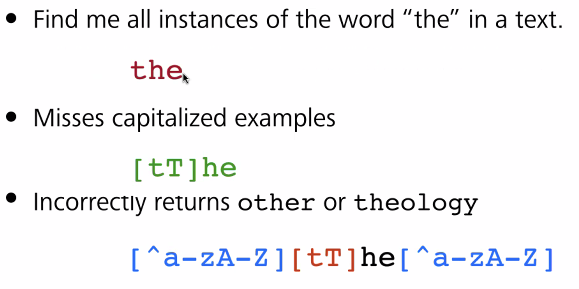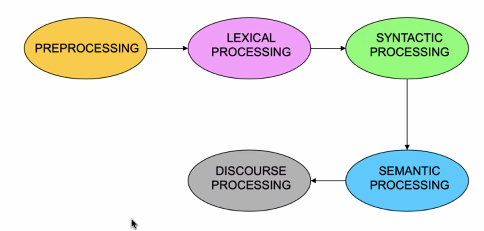General §
rir:Checkbox#todo Exam IL §
rir:PencilExam §
- 30.03.21 probably in person exam
- Reference book EXTREMELY important for overall understanding
- 50/50 Bookwork and Open-Ended questions
- Bookwork: Specific questions about lectures
- Open Ended: Imagine that… Find solution for…
rir:TimeOld exam questions §
- Basics
- List 3 examples of lexical ambiguity
- Write down a sentence that matches the RegEx
- Why use tf in if.idf?
- Assign POS-Tags to this sentence
- What does a tokenizer might have when processing a ”.”
- Why did sparse word embeddings become so popular
- More applied knowledge
- Develop a grammar that
- Accepts x
- Rejects y
- Extend it, so that it also accepts other sentences like z
- -> add more high lv rules
- How would a chart parser parse x
- Applications (demonstrating knowledge)
- Build word processor, explain how it would predict
- Motivation for smoothing?
- Implications of Zipf’s law? Larger corpus -/-> better predictions
- How to evaluate the word processor
rir:StackModule overview §
- NLP as a pipeline
- RegEx, Automata
- Automata
- Regex
- Good quick n dirty solution

- Errors
- Type 1 false positive
- Increase accuracy/precision
- Type 2 false negative
- Text normalization
- First step in all NLP approaches
- Language modeling
- Sequence of tokens/tags used to model a language
- Predictions are often a choice
- -> Predict most likely with statistical approach
- Markov Assumption
- POS-Tagging is a basic NLE application
- = assigning Tags to words
- Combine frequency and contextual information
- Frequency: How common is Token t
- Context: How likely is this (Bi)gram
- Text classification
- Assign category to text
- Naive Bayes
- Vector semantics
- Vectors used to represent words and their relationships/meaning
- Nearby vectors = similar words
- Knowledge-Driven approach
- Data-Driven approach
- Embeddings, get info from corpus
- Tf-idf
- = sparse vectors
- count nearby words
- Word2Vec
- = dense vectors
- learn by training
- Calculate cosine, then similarity
- Evaluating
- Extrinsic
- Is the result better than …?
- Intrinsic
- Are the processes better than… ?
- BERT
- Sparse, contextual
- Trained similar to word2vec
- Formal Grammars
- Capturing structure of natural languages
- Parsing to map input depending on Grammar
- Top Down
- Bottom Up
- Chart parsing
- Probabilistic Parsing
- Semantics
- Required: Representation, Meaning of word/phrase, logical form for result
- Application Areas (VL12 Notes IL)
- Question answering system
- Chatbots
- Rule-Based Vs. ML-Based Vs. Hybrid
- Industry Vs. Academia

